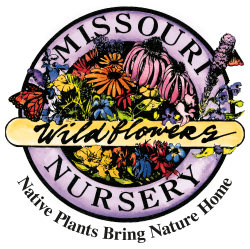Indigo bush is a mid-size shrub with fragrant flowers. Bright orange anthers contrast with the indigo-colored, tubular petals. The plants contains small quantities of indigo pigments, which explains where the common name comes from.
It's a good plant for wildlife. The flowers attract a variety of bees looking for nectar and pollen. It is a caterpillar host plant for the silver-spotted skipper, southern dogface, black-spotted prominent, and the common tan wave. Quail use the seeds as a food source, while red-winged blackbirds may use the plant for nesting.
It is native to much of the United States, including Missouri, and can often be found on stream banks. However, it is not native to New England or the Pacific Northwest. In these areas, it is often listed as an invasive exotic that displaces other plants in sensitive riparian areas.
Height: 6 to 10 feet
Space: 5 to 8 feet
Seed: Sow by mid February in permanent location outdoors, otherwise cold stratify for at least 60 days. Alternatively, scarify in a blender and soak overnight for good results throughout the year. Cover to depth of seed. Ripens in late September. Retains viability at least 5 years.
- 200 seeds per packet
- 3,700 seeds per ounce
- 1 ounce per 100 square feet









